Recently released for PS4, PS5, and PC (Epic), the “2D Souls-like” Salt and Sacrifice is a game I really wanted to like. And for the most part, I do like it. I’ve logged a little over 44 hours on it so far, and mostly enjoyed myself. But there’s no denying that the game has problems. Its tight and well-executed core gameplay is marred by some bizarre design decisions, and by a bunch of minor UI annoyances that in aggregate become a major gripe.
Background
Ska Studios was founded in 2007 by James Silva, who is basically a one-man video game-developing machine, and absolutely one of my favorite indie devs.
His games first came to my attention when I was visiting my brother and tried a bit of The Dishwasher: Vampire Smile (2011). It was a 2D action game with tight controls and great-feeling combat that I immediately fell in love with.
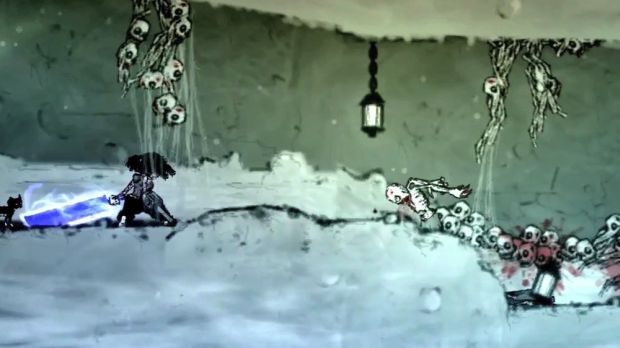
And besides the wonderful core combat, one other thing that I remember really impressing me about that game was how it handled difficulty: rather than just scaling up enemy health and damage, increasing the difficulty level would completely change your encounters, e.g., replacing the standard enemies with baddies that would normally only appear later in the game. Most devs simply don’t go to the effort of really customizing their difficulty settings that way. It showed me that the game was really full of a lot of thought and care.
After releasing Charlie Murder in 2013, Silva began work in earnest on Salt and Sanctuary. It had started as something of an experiment or even a joke: what would a 2D Souls-like with Dishwasher combat look like? Silva futzed around with the idea and circulated the results around to his friends. Everyone liked it so much that he decided to actually go ahead and make a full game out of it.
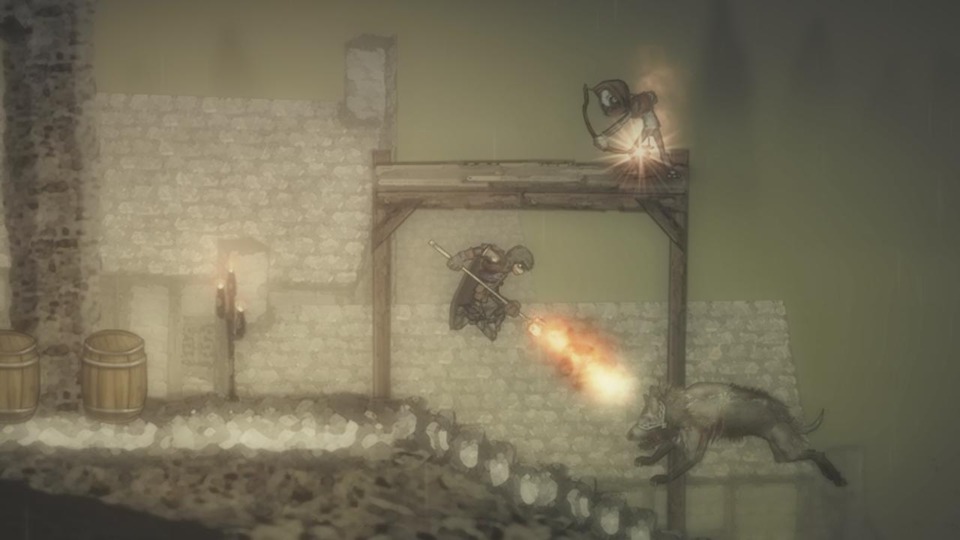
Salt and Sanctuary benefited from enormously fortunate release timing. It came out on March 15, 2016... just nine days before Dark Souls 3. Since it was billed specifically as a 2D Souls-like, it immediately found a large audience of Souls fans who were frothing at the mouth waiting for the next entry in From Software’s venerable series and needed something to tide themselves over.
The other thing you have to realize is that at the time there just weren’t that many Souls-likes out there, or at least not good ones. Deck13 had taken a swing with Lords of the Fallen in 2014, which was honestly pretty terrible (their follow-up, The Surge, was much better, but wouldn’t be released for another year). Nioh was still a year away. So was Hollow Knight.
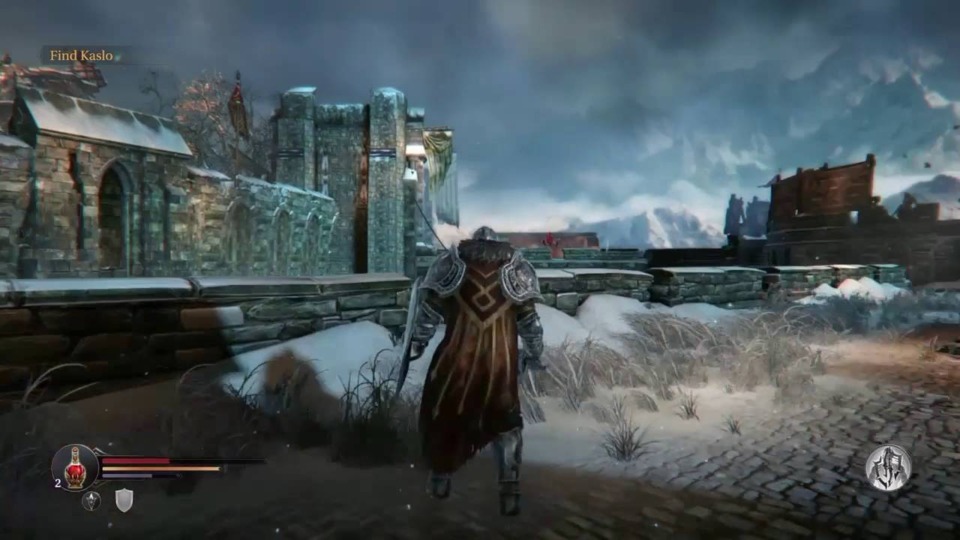
Between those two factors, Salt and Sanctuary was a critical and commercial success. Minor gripes aside, Silva had built a Souls-like that was actually good, something that arguably no one else had managed yet.
But though Ska Studios had been releasing a game almost every year since 2009, it took six years for the follow-up to Salt and Sanctuary to appear. It found a very different sort of market filled to the brim with games aping the Souls formula, not to mention tepid release timing (at best). New releases are arguably still being consumed by the monster that is Elden Ring, which has held on to the top of sales charts with an iron grip since its release in late February.
The Good...
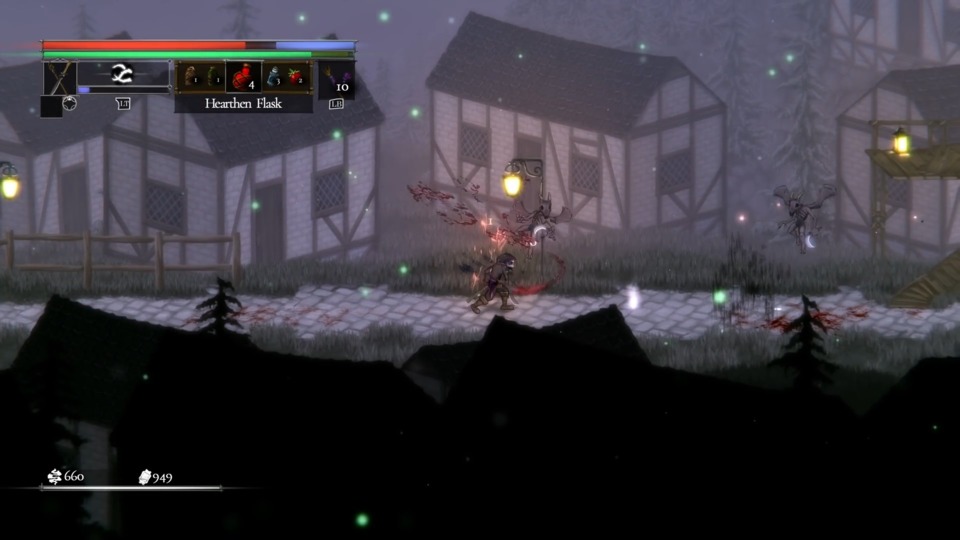
The first way in which Salt and Sacrifice succeeds is that James Silva remains really fucking good at designing and executing compelling 2D combat. If you’ve played any of his previous games, there’s not really much more I need to say about it. The controls are fast and responsive, with a high skill ceiling and some stylish flair here and there. Speaking to this last, attacking in mid-air with a melee weapon will keep you suspended there for the duration of your combo—something which occasionally still throws me off, but shows the game’s roots in the high-flying, wire-fu inspired combat of Dishwasher.
There’s also about a dozen weapon types to try out, though the game’s systems don’t really encourage you to do so (more on this later). And even beyond weapon types, Silva has ripped another page out of the Dark Souls playbook and added weapon arts, so that most of them have some sort of magic spell attached, further differentiating things (some weapons have as many as three different spells on them, executed by holding L2 and hitting either the square, triangle, or circle button).
Another place where the game shines is level design. Rather than one large interconnected world, there are instead five fairly large zones to warp to, not unlike the archstones of Demon’s Souls. Each one is interesting to explore, with lots of shortcuts to unlock and secrets to find. The game does employ some Metroidvania-like elements to keep you locked out of little pieces of levels. E.g., a grappling hook will allow you to reach some previously unreachable areas, and likewise with a glider that will let you ride wind currents/updrafts.
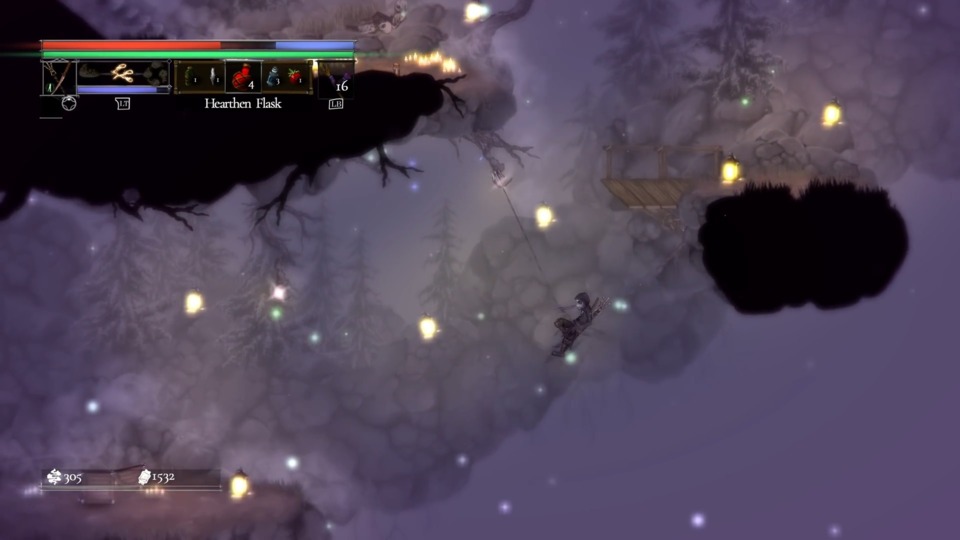
For the most part the platforming aspects feel pretty good, though one thing I could never get over is that running before you leap does not increase the distance jumped at all, which just seems wrong. You get exactly the same horizontal distance jumped from a walk as you do out of a run, so the latter ends up feeling like the jump is inexplicably killing your momentum.
Probably the most unexpected aspect of the core gameplay in Salt and Sacrifice in relation to its predecessor is just how much Monster Hunter DNA it has. Though there are a few stand-alone, single-fight bosses, most of the “boss” encounters in Salt and Sacrifice are “mages,” which can be continually re-hunted. This is, in fact, basically the game’s central story conceit, that you have committed some crime and have been sentenced to hunt mages for the remainder of your days. And just like Monster Hunter, you can keep hunting mages in order to gain crafting materials, so that you can then make a funny hat out of their skin (or weapons, or rings or amulets, or other armor, etc).

It's in the context of these mage hunts that the game being split into discreet zones makes more sense. Hunting a mage consists of finding it, doing enough damage to it to make it run away, and then following it throughout the level to finally deliver the finishing blow. If you’re “tracking” a particular mage, an ethereal sort of trail will point the direction you need to go. But there will usually be other mages on the level, any of which you can follow and kill, though all but your target you’ll have to find without the benefit of tracking.
A neat aspect of the game is that the mages are hostile to one another, and to any other random mobs on the level. I’ve seen as many as four mages on-screen at once. It’s fun to sit back and watch them pound on each other (not unlike Monster Hunter’s “turf wars”), with any luck dispatching each other’s summoned minions for you. After they’ve beat each other up a bit, you can swoop in and finish the job.
There’s also full online multiplayer support this time around. Salt and Sanctuary only had local couch coop, but this one has the full shebang of online connectivity. But I can’t really tell you much about that because I’ve played the entire game on my own, offline. All I can say from looking at some reviews is that it seems to work fine and can be pretty fun to play through with a friend.
...the Inexplicable...
But for all that its core gameplay remains compelling and fun, there are some core design decisions in Salt and Sacrifice that just don’t make much sense, garnering little benefit while actively hurting the player experience.
The first of these is one I’ve already alluded to: the skill tree. Unlike its explicit inspiration—From Software’s Souls games—Salt and Sacrifice employs a skill tree to level up (think Path of Exile, though not that ridiculously large). The key thing to realize here is that the skill tree is not only the source of random stat nodes (e.g., a node might give you a point in strength or dex), but also the source of unlocking the ability to use a weapon type at all.
Each weapon within a type is ranked from class 0 to class 5. Any character can use a class 0 weapon, but for ranks 1–5, you need to unlock the appropriate node on the skill tree in order to use the weapon. The effect of this is that experimenting with different weapons is actively discouraged.
E.g., I started out with a Sage character, who uses staves by default. I was interested in at least trying spears and glaives, but I would have had to sink levels into unlocking the right nodes to do so (and in fact, there are no class 0 glaives in the game!). Those were levels I needed not only to get staves to class 5, but also to get my light armor to class 5 (yes, you also need skill nodes to wear armor) and to boost core stats, like health and mana. The end result was that I never experimented with other weapon types, even though I wanted to. I find it hard to justify this as a design decision.
Another frankly bizarre design choice, given how much the game leans on a Monster Hunter-like concept of re-hunting mages over and over, is that there’s very little scope for actually targeting a mage you want to hunt. Each mage gets two missions in which you’re targeting them (a “named” and “nameless” version, in the game’s parlance), complete with the previously described tracking mechanism. But once you complete those two hunts, you can’t do them again. That means that if you need materials from some particular mage, you either have to head out into the world and simply hope to run into the right one (there are about 20 of them), or await the daily reset of randomized mage hunts that happens at midnight GMT... and in that case, even if you do get an instance of the one you’re looking for, it can once again only be done once.
I really don’t get this. Imagine a Monster Hunter game in which you can’t pick which monster you’re fighting. It’s just... bizarre.
Lastly, here’s one everyone hates: your health and mana potions are not bottomless. Like Bloodborne or Demon’s Souls, you have to gather or buy these sort of restorative consumables, putting you in a position where you can run out over many attempts fighting a difficult boss/mage. Even From Software stopped doing this, because literally no one enjoys sitting around farming for potions. It made me use them less than I wanted to, simply because I didn’t want to be put in a position of needing to waste time farming the damned things.
...and the Lazy.
And then there are all the little UI annoyances that simply seem to reflect a lack of any careful thought or simple laziness, like Silva put something together early on that worked, but was not ideal, and never bothered to go back and refine it in any way.
One simple example is that at the title screen, the top and always default option is “New Game,” while “Continue” is the second option, despite the fact that 95% of the time you’ll be continuing your game rather than starting a brand new one. I can’t tell you the number of times that I hit “New Game” by accident on startup. It’s a small thing, but it’s emblematic of the lack of thought that was put into this kind of thing throughout the game.
Another thing is the display for the skill tree. Check out the screenshot below.
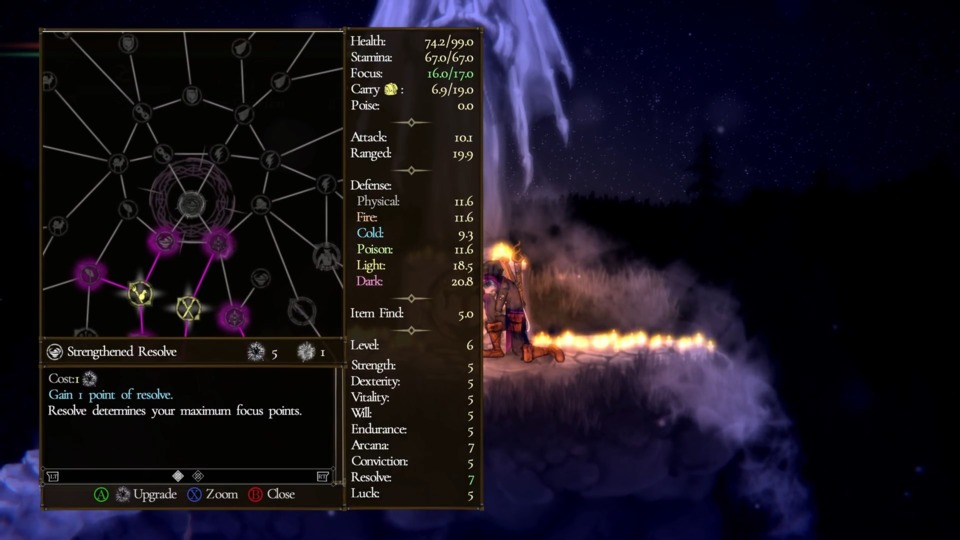
Why exactly are you forced to view this giant skill tree through a tiny, claustrophobic little box that takes up less than a quarter of your screen’s real estate? I have no idea! And while the “zoom” option will zoom out, it won’t increase the amount of area on the screen that the skill tree is covering, just make all the icons so tiny that you can’t actually read them.
And then there’s the fact that there is no way at all to sort your items and equipment. The stuff in your inventory is not organized alphabetically, or by order of discovery, or by weapon type, or by any other criteria that I can discern. I can only surmise that it’s sorted by some sort of hidden item number.
Even the equipment box is little help in keeping your equipment organized. Because I knew that I was somewhat locked into staves due to the game’s skill tree system, I started putting weapons of all other weapon types in my stash, which at least made it easier to hide the irrelevant options when equipping things. But when you go to the screen to upgrade equipment, all the stuff you’ve stored away in your box shows up again anyway, so that it’s hard to get a handle on the ones you care about in a sea of stuff you’re trying to ignore.
I’ll mention one other thing that grinds my gears. Not only is there “salt” in this game, which is used exclusively to level up, but also “silver,” which is used to buy consumables and some armor and weapons from various NPCs. Salt behaves just likes souls do in the Souls games: die and you’ll have to reach your bloodstain to reclaim it. But silver is different: it is halved every time you die, and there is no recovering it... meaning that you can go from 1,600 silver to 100 in just four deaths.
Now, there is in fact a way around this. One NPC will sell “bags of silver” at a 20% markup. E.g., you can buy a bag of 1,000 silver for 1,200. These “bags” behave like portable souls in the Souls games: you keep them even when you die. For this reason, after every hunt you should really be spending all your silver, either on items you want, or “banking” it with these slightly marked-up bags... but the game doesn’t tell you that. I literally played about twenty hours of the game before I realized this was happening, and hence had lost basically all my silver through the first half of my playtime. Not only does this seem like an unnecessarily cruel sort of system, but the importance of this buying bags of silver mechanic just isn’t made nearly as plain to the player as it should be. Given how quickly and easily you can end up losing all your money, it isn't a mechanic the game should allow you to miss.
Conclusion
Salt and Sacrifice is an enjoyable game to play, but in 2022, it is no longer a novelty: Souls-likes have become a cottage industry, and it takes a lot more these days to stand out from the crowd. Salt and Sacrifice, I’m sorry to say, simply doesn’t stand out. I mean, it’s fine. It’s a 7/10 sort of game. For twenty bucks, you could do a lot worse. If you enjoy Souls-like games generally, and James Silva’s previous efforts specifically, you’ll probably still dig it.
But where The Dishwasher: Vampire Smile left me impressed with the care and thought that was put into its design, Salt and Sacrifice at times left me feeling like there was little thought involved at all, that old systems had inexplicably been carried forward without any awareness of how the genre has evolved or any careful examination as to how it all fit together, like an early access title that had “version 1.0” slapped on it before it was really done. And that feeling of being plagued by poor design decisions and design oversights is what makes Salt and Sacrifice merely a good game, rather than a great one.
Log in to comment